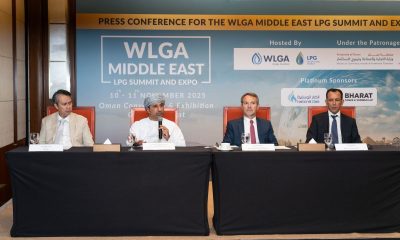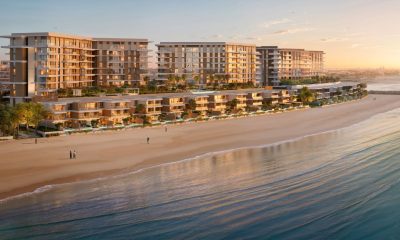Oman 2015
EXPANDING INFRA
The country’s national broadband strategy aimed at building a fibre optic cable network throughout the country, especially in far-flung places, is gathering momentum.

The country’s national broadband strategy aimed at building a fibre optic cable network throughout the country, especially in far-flung places, is gathering momentum.
QUICK GLANCE
Oman Broadband Company has undertaken a major project to boost broadband connections to both residential and commercial units.
The fibre optic coverage is targeted to extend to 28 per cent of the capital region by the end of 2015, which will further rise to 80 per cent by 2020.
Oman is witnessing a phenomenal growth in new generation technology-enabled devices as well.
Omantel’s revenue grew by 7.5 per cent to RO256.6 million for the first half of 2015.
Ooredoo Oman’s customer base also rose by 11.4 per cent to 2.75 million by end-June 2015.
Major development programmes are under different stages of planning and implementation, which include building a nation-wide fibre optic backbone and strengthening of government network. And the state-owned entity for fibreoptic network – Oman Broadband Company – has undertaken a major project to boost broadband connections to both residential and commercial units. So far, the company has delivered fibre optic broadband connections to around 70,000 residential and commercial units and plans are afoot to roll out fibre optic infrastructure to add another 130,000 units before end-2016.
The whole programme is centred around its strategy to connect virtually every building and village across the Sultanate to national broadband infrastructure by 2040. The fibre optic coverage is targeted to extend to 28 per cent of the capital region by the end of 2015, which will further rise to 80 per cent by 2020. As part of a major strategy, Oman Broadband Company (OBC) was set up to roll out fibre optic infrastructure across the Sultanate with a view to ramping up broadband-based Internet penetration. The fibre optic infrastructure is being made available to two major service providers – Oman Telecommunications Company and Omani Qatari Telecommunications Company (which was recently rebranded as Ooredoo Oman).
All these initiatives are also in line with the Telecommunications Regulatory Authority’s (TRA) national broadband strategy, aiming at introducing high-speed Internet connection throughout Oman, especially in far-flung places. TRA has launched the national broadband strategy way back in 2010, with the ultimate aim of introducing a broadband connection into every home and business. The speed of Internet services is expected to improve in the future as telecom firms are switching over to high-speed fibre optic cable networks for the next phase of long-term development, which is mainly supported by OBC. The company is partnering with various ministries and government-run utilities, notably the Public Authority for Electricity and Water, Ministry of Regional Municipalities and Water Resources, Haya Water, for laying cables in conjunction with the trenching and pipe-laying programmes of the latter entities.Rural areas and other remote locations, home to around 23 per cent of the national population, will be covered in the next phase of the multi-stage programme. There are around 459 villages that have no Internet access to date, while a further 2019 villages have only 2G services.
The overall target is to cover all of the urban areas outside of Muscat by the year 2030. Fibre optic coverage of rural areas will commence in 2020, especially in regions where government utilities already have a presence. It has also plans to utilise the existing fibre cables of organisations like Oman Gas Company, Petroleum Development Oman and other utility firms for providing broadband access in these areas. In yet another major development, Ooredoo Oman, the second leading telecom service provider in the country, has recently completed its national fibre backbone, spanning almost 5,500 kilometers across the country. Providing high speed reliable connectivity, the company has established an independent national infrastructure to bring cutting-edge speed and services to customers and businesses countrywide. The completion of this project signifies the dawn of a new era in Oman’s telecom sector, and the telecom firm will be able to gain from the massive infrastructure.
Also, Information Technology Authority (ITA) and Oman Broadband Company have signed an agreement to implement a private and resilient fibre optic backbone for Oman Government Network (OGN). This agreement is for connecting the existing 63 government entities hosted by OGN for providing high-speed connectivity and linked to the National Data Centre at ITA, besides setting up another backup data centre. The first phase of the project will cover 63 headquarters for all government organisations in the Muscat region replacing the current lower speeds of OGN. The new service will enable government organisations to enhance the service quality and better customer satisfaction. It will also enable government organisations to integrate by exchanging data to facilitate a true end-to-end service delivery for their customers.
It is also an essential milestone in the implementation of eTransformation plan adopted by ITA, as the new project will help transfer data and procedures in high speed. The implementation of this network will help to remove obstacles related to fast data transfer, which is currently a challenge to the implementation of eGovernment services. Like its Gulf neighbours, Oman is witnessing a phenomenal growth in new generation technology enabled devices as well. For instance, 4G LTE (long term evolution)-enabled devices will account for four out of five mobile subscriptions in Oman by 2020, according to a five-year forecast by Ovum. Oman is among the more advanced telecom markets in the Middle East, and the continued roll-out of LTE networks by the two main operators, along with factors such as the increasing affordability of LTE-enabled devices, will lead to a rapid rise in the use of this technology over the coming five years.
The number of LTE mobile subscriptions in Oman will exceed GSM (global system for mobile communications or 2G) subscriptions in the country by the end of 2015 and overtake W-CDMA (wideband code division multiple access or 3G) subscriptions in 2018, growing to account for 80.6 per cent of Oman’s mobile subscriptions by end-2020, Ovum report said. The number of GSM connections in Oman will decline steeply over the forecast period, with the result that W-CDMA and LTE connections combined will make up 99.5 per cent of mobile subscriptions in the country by end-2020. Ovum also projected a significant growth in the country’s fixed broadband market, with the number of fixed broadband subscriptions expected to increase from 215,500 at end-2015 to 307,600 by end-2020. In particular, the take-up of high-speed, fibre-based fixed-broadband services is set to grow strongly as Omantel, Ooredoo Oman, and the government-backed Oman Broadband Co expand their deployments of fibre optic networks. Ovum forecasts that the number of optic fibre subscriptions in Oman will reach 99,000 at end-2020, giving it a 32.2 per cent share of the fixed broadband market by subscriptions in 2020.
However, copper-based digital subscriber line (DSL) will continue to be the main technology for fixed broadband in Oman, accounting for 43.8 per cent of fixed broadband subscriptions in 2020. Wireless technologies, primarily WiMAX and LTE, will account for 24.1 per cent of Oman’s fixed broadband subscriptions in 2020, with the number of fixed LTE subscriptions increasing as WiMAX-based subscriptions decline. Fixed broadband penetration is a little lower in Oman than in some other Gulf countries, but the expansion of broadband network coverage, and particularly of fibre networks, will boost the availability and take-up of high-speed fixed broadband.
Oman Telecommunications Company’s revenue grew by 7.5 per cent to RO256.6 million for the first half of 2015, from RO238.6 million for the same period of 2014. The net profit declined to RO61.3 million for the first half of this year from RO65.9 million in 2014. Decline in net profit was mainly due to a loss incurred by Omantel’s subsidiary Worldcall. Also, increase in domestic operational expenditure, mainly of non-recurrent nature, also impacted the domestic net profit for the quarter.
Expenses for the period have increased by 12.7 per cent to RO190.6 million from RO169.1 million in 2014. Omantel’s revenue growth was mainly driven by domestic retail revenues, which have recorded a growth of 8.3 per cent and now reached RO253 million compared to RO233.6 million for the corresponding period of year 2014 mainly contributed by both fixed and mobile broadband and wholesale services. All major segments – consumer, corporate and wholesale revenues – have recorded a growth over last year.
-

 Alamaliktistaad Magazines2 months ago
Alamaliktistaad Magazines2 months agoAlam Al Iktisaad – September 2025 Edition
-

 Magazines2 months ago
Magazines2 months agoOER – September 2025 Issue
-

 News2 months ago
News2 months agoKitchenomiKs Secures Investment of US$3.2M Led by Jasoor Ventures
-

 News2 months ago
News2 months agoOman Inaugurates ‘Hadatha’ – Its All-New Cybersecurity Center
-

 Banking & Finance2 months ago
Banking & Finance2 months agoOman Arab Bank Highlights Its Ongoing Strategic Initiatives and Future Plans
-

 News2 months ago
News2 months agoIEA Expects Global Oil Market to Remain Oversupplied in 2026
-

 Energy2 months ago
Energy2 months agoWLGA Middle East LPG Summit & Expo 2025 to be held at OCEC on November 10 and 11
-

 Real Estate2 months ago
Real Estate2 months agoAl Mouj Muscat Unveils Azura Beach Residences Phase 2: A New Chapter in Waterfront Living































You must be logged in to post a comment Login